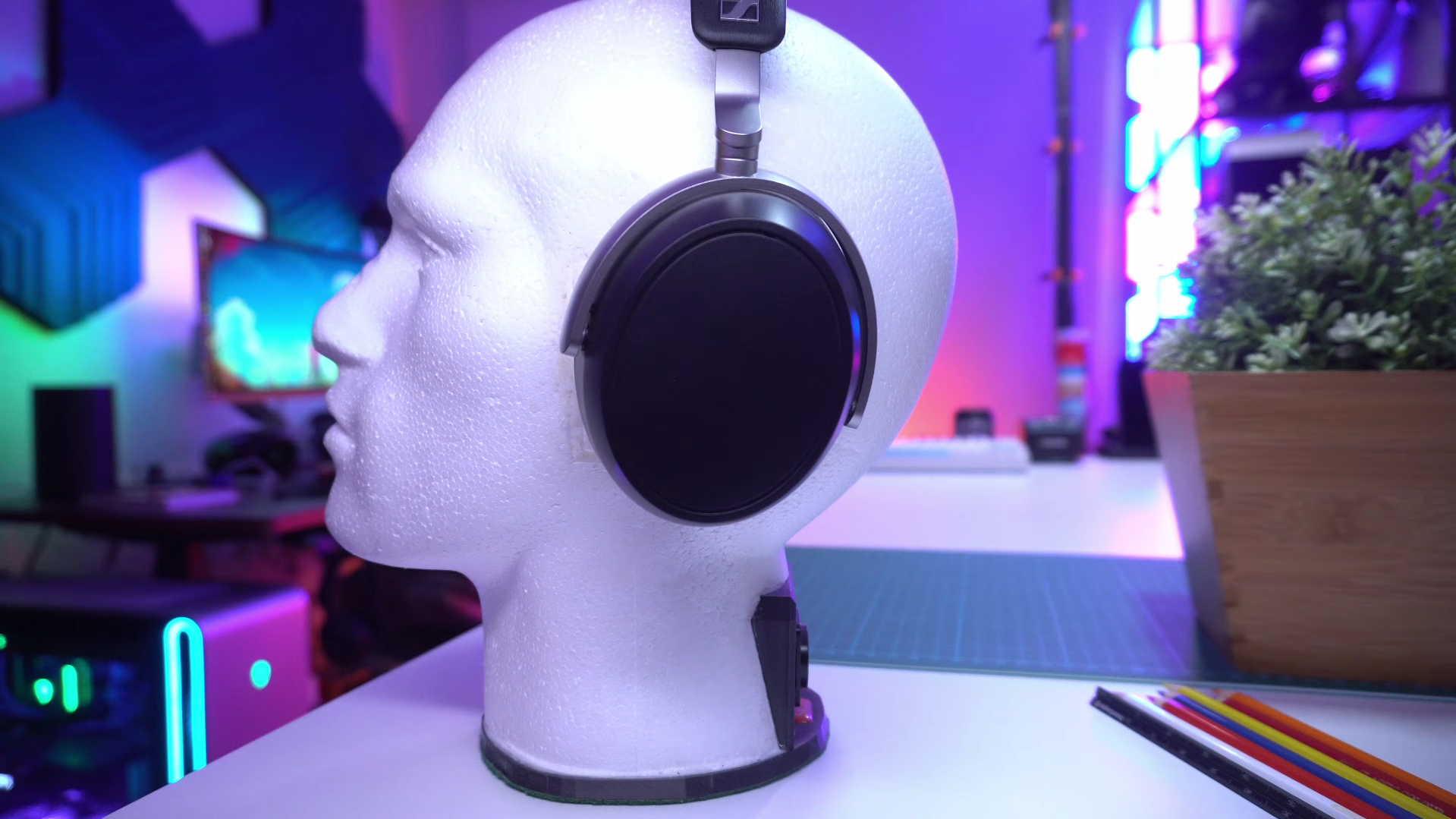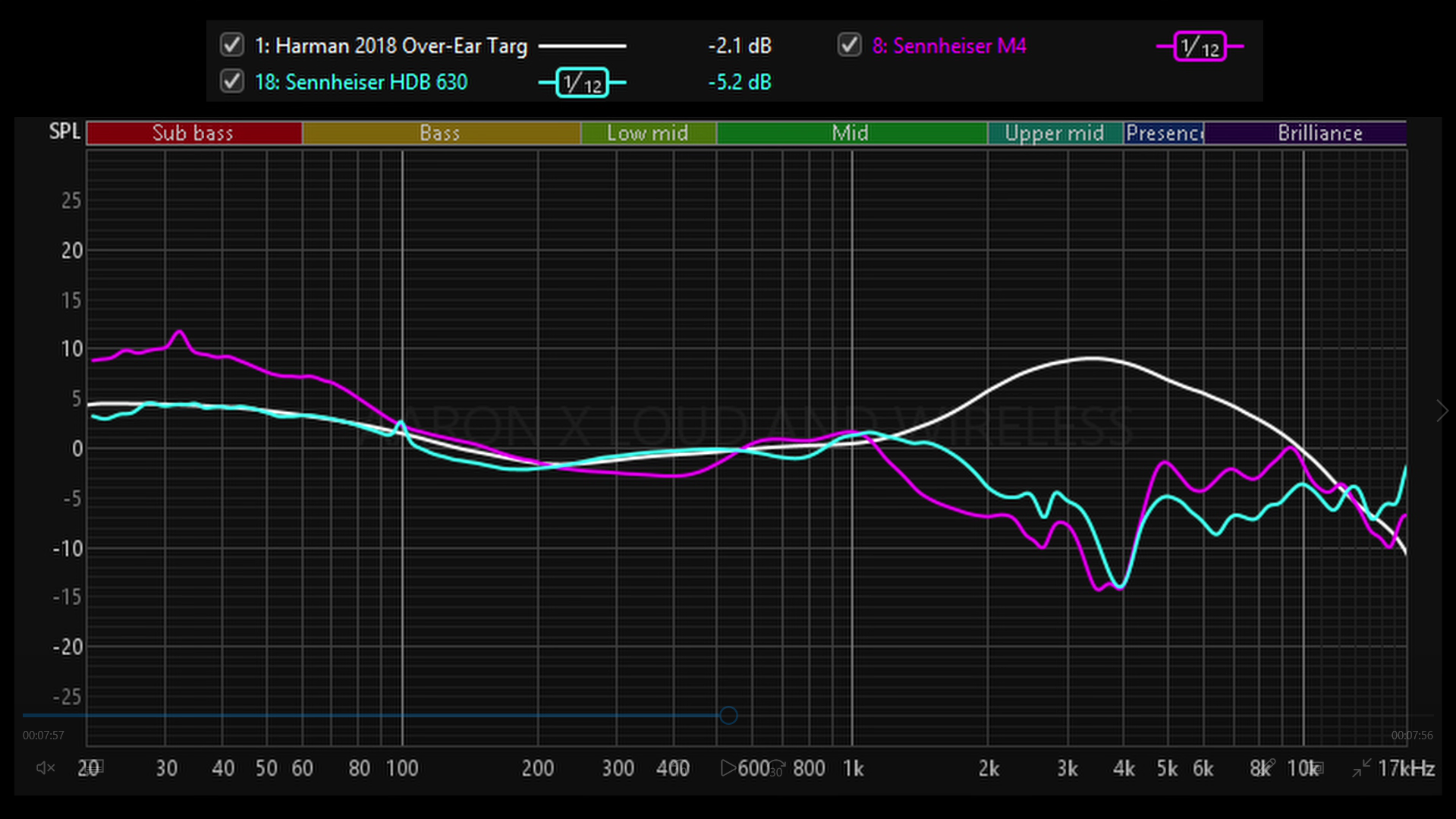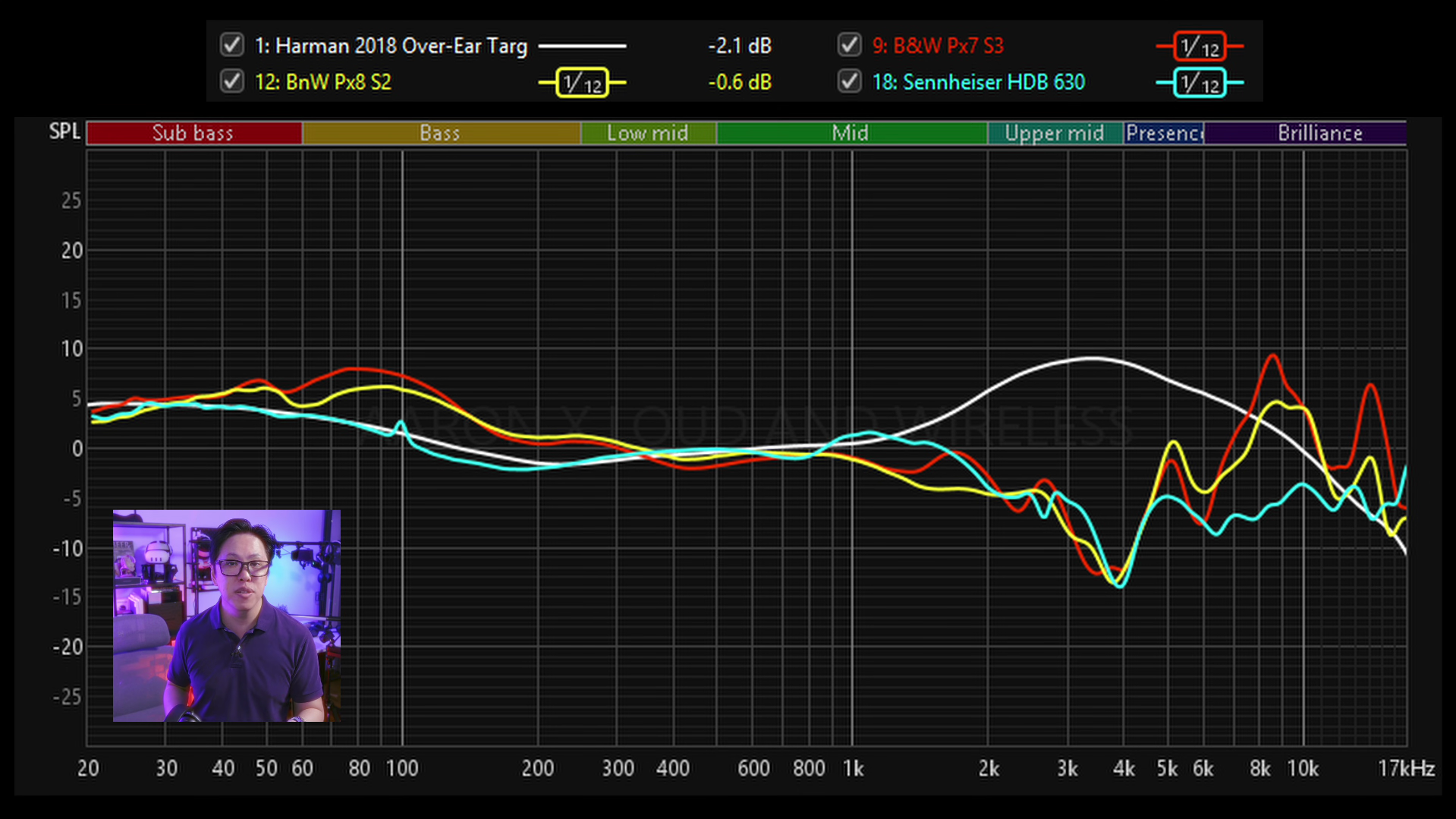Sennheiser HDB 630 review (vs Px7 S3, Px8 S2, P100 SE, Momentum 4)
The HDB 630 is basically an upgraded Momentum 4. It’s got the new parametric EQ which finally lets us do some serious tuning on the exact frequency bands along with Q-factor adjustments, although it isn’t perfect. It may say on the graph “+/-12dB” but in reality, it seems like you can only make up to +-3dB changes, because the DSP kicks in and prevents you from going too far with the adjustments. A bit more about EQ later on.
It also has Crossfeed mode which centers the left and right stereo channels. It’s a feature taken from the very, very expensive Sennheiser HE-1 (USD 70,000), meant for very old music mastered in the very early days of Stereo, when people were still experimenting with left and right discrete channels. Songs like David Bowie’s Space Oddity come to mind. Crossfeed mode will help to blend both channels together to make the song sound more natural to modern tastes.






The HDB 630 also has 4 different ways to connect it, like USB-C and 3.5mm wired, Bluetooth, as well as connecting from the BTD 700 dongle. The main reason to use the dongle is that whatever device you connect it to, you can get an aptX Adaptive stream from it, which is great for iPhone users because iPhones don’t support any form of aptX streaming. Auracast streaming is also possible, and there’s a low latency gaming mode as well.
There is a sound quality difference between connections which I will discuss when I dive deeper into their sound quality. And I will also be comparing their performance to the B&W Px7 S3, Px8 S2, the Melomania P100 SE, and of course, the Momentum 4.
Microphone Quality
The HDB 630’s microphone quality is pretty good. Compared to the Momentum 4 in noisy conditions, the noise gating is deeper so the background is silent, and voice filtering seems to work better than the other models in this video.
Its noise gating in extremely n noisy conditions is so aggressive that it does cut into my voice, however I prefer that to having too little noise reduction, which is a problem with the other headphones in this comparison. This was tested in both quiet and noisy conditions using really loud cafe noise and wind noise from this fan.
👉 Have a listen to the mic quality samples
Active Noise Cancelling
In terms of active noise canceling, the HDB 630 is quite an effective all-rounder against everyday noises, voices and low frequency rumble. It won’t be able to cut as much noise as the best noise cancelers from Bose and Sony, especially in the higher frequencies, but compared to the ones in this comparison it is one of the best noise cancelers, only the Px7 S3 is a bit more quiet. Listen to the samples.
👉 Have a listen to the ANC quality samples
Transparency Mode
In terms of transparency, it’s usable because it’s transparent enough for awareness, and my own voice didn’t feel occluded so speaking to people didn’t feel unnatural. In this comparison, it’s more transparent than the P100 SE, and a little clearer than the Momentum 4 in the low frequencies, but not as clear or airy as the B&W headphones.
Sound Quality
For sound quality over Bluetooth and on its default settings, if we compare them to the Momentum 4, it is an upgrade, because even if, in terms of dynamic range, tuning and soundstaging, the HDB 630 sounds rather similar to the Momentum 4, it does have more resolving power, and discrete tracks have more clarity and focus. But for more critical listeners I wouldn’t say that it’s the best sound quality, especially if we compare them to the B&W and Cambridge Audio headphones here.
Compared to the B&W Px7 S3 and Px8 S2, the 630 sounds more relaxed, laid back, more emphasized in the midrange and less boomy in the bass. Soundstaging also feels more centered, whereas the B&Ws have the left and right elements further to the sides, so it’s a very different experience - more engaging and enveloping, versus the laid back, smoother sounding HDB 630.
Where the B&Ws sound better compared to the HDB 630 is that their midrange has more focus, and it’s more resolving in the upper and lower harmonics. For example, while you can hear the plucking of guitar strings very clearly on the HDB 630, it doesn’t have as much body or air as on the Px7 S3 and Px8 S2.
Between them, the Px8 S2 sounds the best. It’s the most resolving, so there’s an added focus and realism to the different tracks and instruments. It also punches deeper, with more texture in the bass compared to the 630, and it is less boomy than the Px7 S3. Where the Sennheiser is better than both B&Ws is in terms of layering. There’s more gradation, so it’s easier to distinguish the background of your music from the foreground, and I do think it’s a smoother, more relaxed sound signature. The added emphasis on the midrange also emphasizes the timbre of vocals more.
Both the Melomania P100 SE and the Sennheisers HD 630 are laid back, chill-sounding headphones. But I will say that the HDB 630 is a bit more mid-focused, with the soundstaging a bit more relaxed than the Melomania so the periphery feels a bit more calm. However, the P100 SE is more resolving. Tracks have a sharper focus, instruments have a tiny bit more air, and there’s a bit more layering than the HDB 630, so there’s more of a 3D quality to the soundstage.
👉 Have a listen to the sound quality samples
Connectivity
Depending on how you connect to the HD630, it sounds a little different. Over Bluetooth, it sounds the most laid back and most rolled-off in the bass. With the BTD 700 dongle, the upper mids and highs are a bit crisper, and I’m getting a bit more emphasis in the mids than Bluetooth.
Over USB-C, the upper mids and highs are more rolled off compared to Bluetooth, but there’s a bit more dynamic range. And over 3.5mm, it sounds comparable to USB-C but bass does sound a bit louder. All connection methods are about as loud at max volume, but at 50% volume over Bluetooth, the HDB 630 is about 10dB softer than the other connection methods. That is on its default EQ.
If you were to tune it with its Parametric EQ, you can expect volume to drop by about 10% more, even with the master gain maxed out. In my opinion, that trade-off is worth it, because if there is one thing I want to fix about its sound, it’s to add more bass, less brightness in the mids, and more brilliance in the highs to airify the soundstage. This is the EQ I arrived at. Now it sounds closer to the B&Ws but still retaining that laid back and layered signature.
Comfort
For comfort, the cushions do feel a bit more plush on my face compared to the Momentum 4, but otherwise they’re comparable. Its clamping pressure is also more gentle than the P100 SE and the B&W headphones so I don’t need to take breaks as often, but I do think the earcups are a bit too shallow.
Heat builds up more quickly, and if you have big ears, you’re going to feel them pressing against the scrim. Other areas of improvement is that if the 630 is connected to two devices at the same time, it doesn’t automatically switch to the dongle if you plug it in. You have to disconnect from one device first, and that slows down the process.
Conclusion
Aside from that, the HDB 630 is pretty impressive. Yes it’s expensive, but it’s definitely an option for its great all-round performance, great app, its customizability and the BTD 700 dongle which you don’t have to purchase separately.
Check latest prices:
Sennheiser HDB 630 - Link TBA
Sennheiser Momentum 4 - https://amzn.to/4hUmSxt
B&W Px8 S2 - https://amzn.to/4q0Pjxu
B&W Px7 S3 - https://amzn.to/3ItnRYh
Cambridge Audio Melomania P100 SE - https://amzn.to/4mj8Zu2
Affiliate Links
When you make a purchase through the Affiliate Links here, I earn a small cut for the sale at no cost to you, and this helps the channel out in a big way. Thank you for your support!










